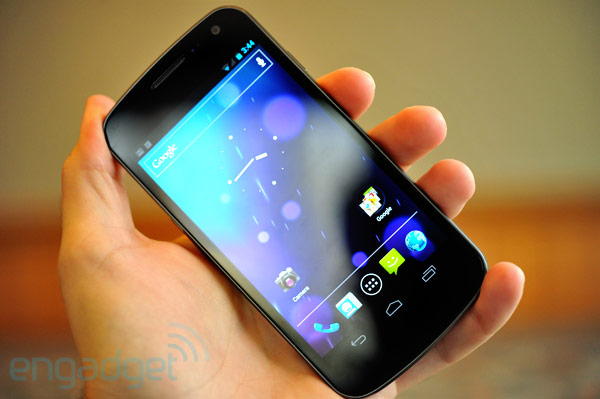The Galaxy Nexus’ Super AMOLED display is a minus, not a Plus

For all the buzz around Samsung’s latest hi-def smartphone , the absence of one little word has largely been glossed over. That word is “Plus” — the wizened Galaxy S II has a “Super AMOLED Plus” display, for example, whereas the sparkly Galaxy Nexus is merely “Super AMOLED.” Did the marketeers simply forget those extra hyperbolic keystrokes, or does the difference actually mean something? Well, regrettably, it does. Samsung uses “Plus” to refer to full RGB displays, in which each pixel possesses its own trio of red, green and blue sub-pixels. Meanwhile, a non-Plus display uses a cheaper PenTile system — which forces pixels to share each other’s sub-pixels. Aside from potential hygiene issues, this results in a lower overall sub-pixel density, reduced sharpness and worse color rendition. We saw the difference clearly enough when Engadget Spanish microscopically compared the original non-Plus Galaxy S against the GS II, and now the folks at FlatPanelsHD have undertaken a more up-to-date comparison at the source link. The upshot? They calculated that, despite its 4.65-inch screen size, the Galaxy Nexus has the same number of sub-pixels as the 3.5-inch iPhone 4/4S . Think of a word with no r, g or b in it, and you eventually arrive at “disappointed.” The Galaxy Nexus’ Super AMOLED display is a minus, not a Plus originally appeared on Engadget on Fri, 21 Oct 2011 05:40:00 EDT. Please see our terms for use of feeds . Permalink

Posted by
on October 21, 2011. Filed under
News,
Tech.
You can follow any responses to this entry through the
RSS 2.0.
You can skip to the end and leave a response. Pinging is currently not allowed.
The Galaxy Nexus’ Super AMOLED display is a minus, not a Plus

For all the buzz around Samsung’s latest hi-def smartphone , the absence of one little word has largely been glossed over. That word is “Plus” — the wizened Galaxy S II has a “Super AMOLED Plus” display, for example, whereas the sparkly Galaxy Nexus is merely “Super AMOLED.” Did the marketeers simply forget those extra hyperbolic keystrokes, or does the difference actually mean something? Well, regrettably, it does. Samsung uses “Plus” to refer to full RGB displays, in which each pixel possesses its own trio of red, green and blue sub-pixels. Meanwhile, a non-Plus display uses a cheaper PenTile system — which forces pixels to share each other’s sub-pixels. Aside from potential hygiene issues, this results in a lower overall sub-pixel density, reduced sharpness and worse color rendition. We saw the difference clearly enough when Engadget Spanish microscopically compared the original non-Plus Galaxy S against the GS II, and now the folks at FlatPanelsHD have undertaken a more up-to-date comparison at the source link. The upshot? They calculated that, despite its 4.65-inch screen size, the Galaxy Nexus has the same number of sub-pixels as the 3.5-inch iPhone 4/4S . Think of a word with no r, g or b in it, and you eventually arrive at “disappointed.” The Galaxy Nexus’ Super AMOLED display is a minus, not a Plus originally appeared on Engadget on Fri, 21 Oct 2011 05:40:00 EDT. Please see our terms for use of feeds . Permalink


Posted by
on October 21, 2011. Filed under
News,
Tech.
You can follow any responses to this entry through the
RSS 2.0.
You can skip to the end and leave a response. Pinging is currently not allowed.



